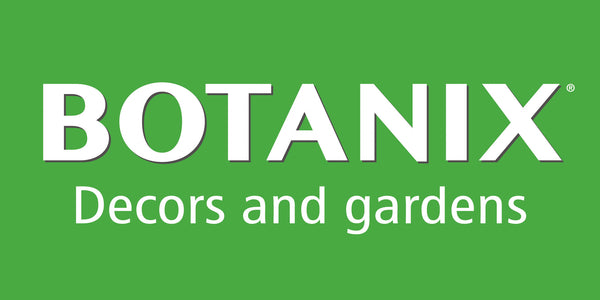Sempervivum spp.
Assorted Sempervivum Tray of 4 – Assorted Hen-and-Chicks
Assorted Sempervivum Tray of 4 – Assorted Hen-and-Chicks
Exposure
- Sun
Rusticity
Bloom time
- June
- July
- August
- Extremely hardy
- Drought resistant
- Easy to care for
- Idéale pour rocailles et couvre-sol
- Unique aesthetic appeal
Discover Hen and Chicks (Sempervivum), a perennial plant that enchants our spaces with its resilience and striking aesthetics. Suitable for both urban gardeners and rural growers, it illuminates every patch with its natural radiance and requires little maintenance – a true botanical gem in our precious green sanctuaries.
This tray offers an assortment of 4 varieties of Hen and Chicks, allowing you to enjoy their diversity of shapes and colours.
5 Interesting Characteristics:
- Extremely hardy (-25°C)
- Drought tolerant
- Easy care
- Ideal for rock gardens and rooftops
- Unique aesthetic appeal
Features
- Foliage: Hen and Chicks feature compact rosettes of round, fleshy, succulent leaves. Colours vary from green to purple depending on the variety and season. Each rosette typically measures between 5 and 10 cm in diameter.
- Bloom: The plant sends up purple flower stalks during the summer, reaching up to 30 cm high. These flower stalks emerge from the centre of a rosette, which will die after flowering but will be replaced by new rosettes ("chicks").
- Light: Prefers a sunny location.
- Habit: Compact and fleshy, Hen and Chicks form low rosettes that spread to form a dense mat over time. Its habit naturally adapts to rocky or sandy environments.
- Growth: Its growth is moderate to rapid thanks to the production of chicks around the mother rosette.
- Moisture: Tolerates excellent drought thanks to its succulent leaves that store water. Well-drained soil is crucial, especially in winter.
- Soil: Requires very well-drained soil. Incorporating sand is recommended to improve drainage.
- Temperature: Extremely hardy, capable of withstanding intense cold down to -25°C. Protection is generally not necessary in Quebec if drainage is adequate.
- Watering: Water moderately and only when necessary in summer. Let the soil dry out completely between waterings. Significantly reduce watering in fall and winter.
Uses
- Types of Use: Primarily used for its ornamental qualities in rock gardens, green roofs, stone walls, and containers. It is also perfect for beautifying difficult areas where other plants would struggle to establish.
- Decorative Features: Its unique rosette shape and varied colours bring interesting structure and texture to the landscape. It helps increase biodiversity and the natural aesthetic of spaces.
Care
- Fertilizing: Hen and Chicks are not demanding regarding fertilization. Light fertilization in spring can be beneficial if the soil is very poor, but it is often not necessary.
- Pruning: Regularly remove dead rosettes after flowering to encourage the growth of new plants around them. Cleaning up dead or damaged leaves can be done as needed.
Planting
- Spacing: Space plants 10 to 15 cm (4 to 6 inches) apart to allow for good development.
- Depth: Plant so the roots are below the soil surface, leaving the rosette just at ground level.
- When to Plant: Spring or fall are the best times for planting, when the soil is cool.
Plant details
Dimensions
Dimensions
Characteristics
Characteristics
Habit:
- Low
- Bushy
- Spreading
Flowering colours:
- White
- Pink
- Red
Plant needs
Plant needs
Watering:
- Low
Maintenance:
- Easy
Soil requirement:
- Well-drained soil
- Dry
Features
Features
Resistance:
- Pests
- Drought
- Heat
- Diseases
Attract:
- Pollinators
Use:
- Ground cover
- Rock gardens
- Container
- Green roof
Attribute:
- Extremely rustic
- Unique aesthetics
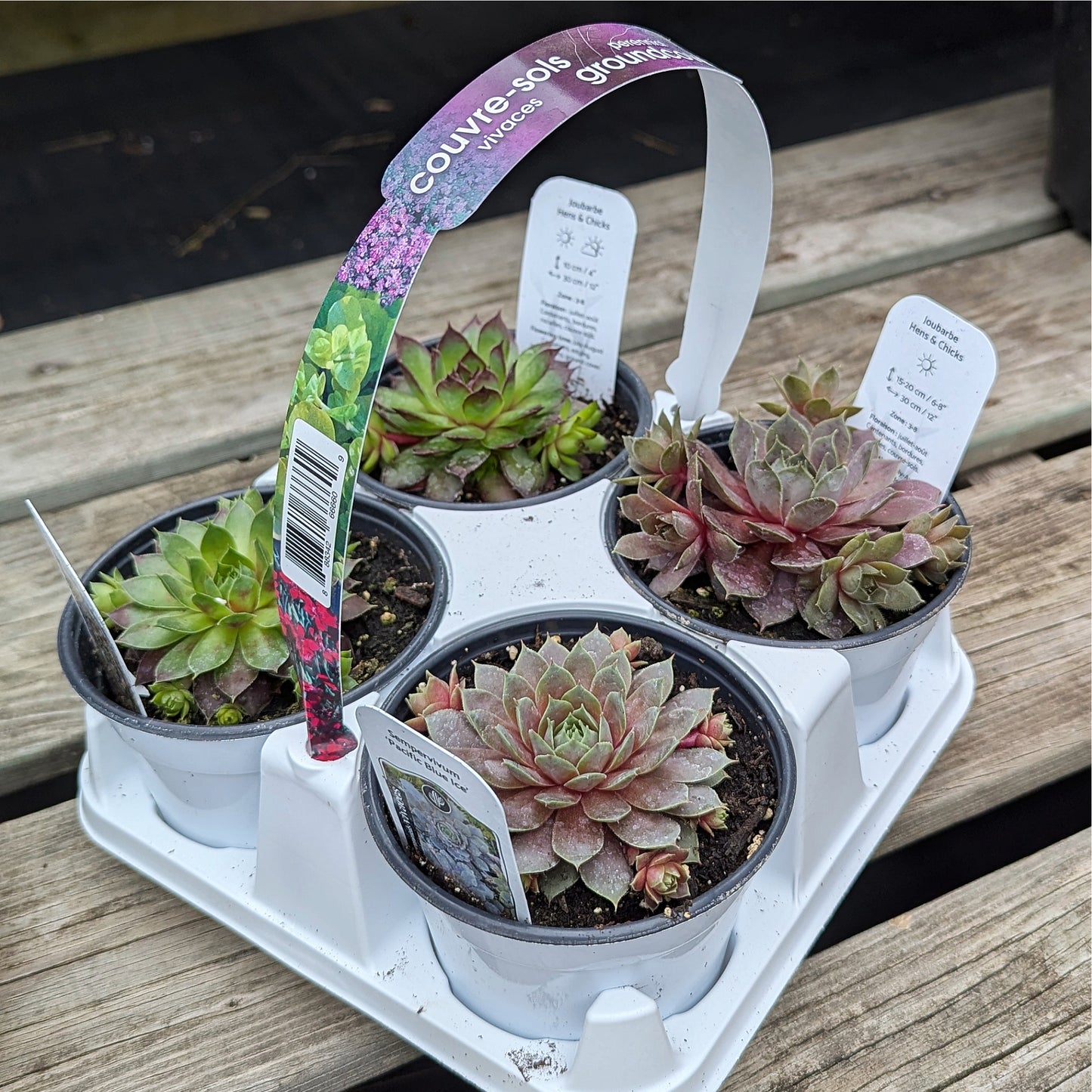
Related articles
-
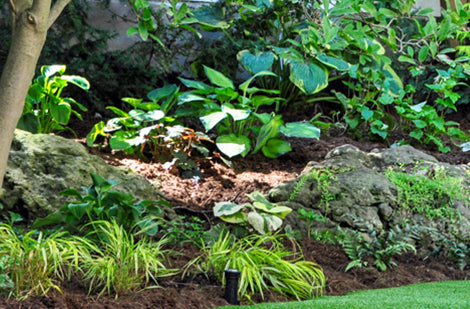
Perennials for all occasions
Read the articleOsez créer des associations inédites qui sauront refléter votre personnalité, même si pour cela vous deviez déplacer certaines vivaces pour mieux les mettre en valeur.
-
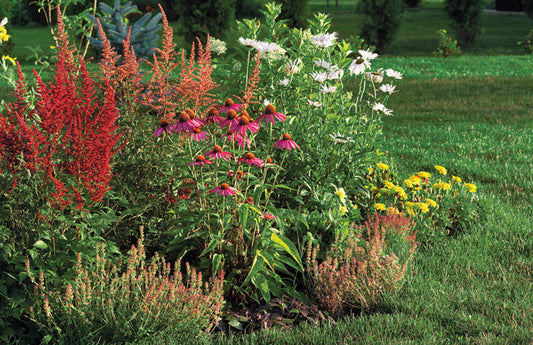
Landscaping with perennials
Read the articleVariétés à découvrir, la tomate se savoure crue, en sandwich, en bruschetta ou en salade. Cuite, c'est l'ingrédient de base de sauces, soupes et salsas.
-
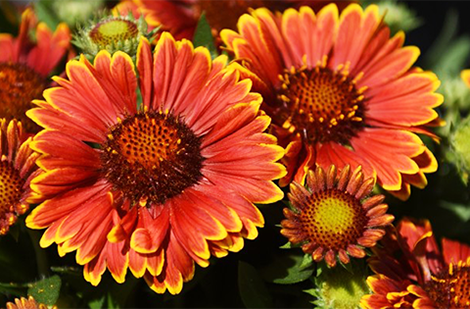
Perennials proper maintenance: cut and fertilize
Read the articleLa grande popularité des vivaces vient du fait qu'après avoir été oubliées pendant des mois au cours de l'hiver, elles réapparaissent sur la scène plus énergiques et surprenantes que par...
-

How to plant perennials in your garden
Read the articleEn pénétrant au jardin, ce sont souvent les plantes vivaces que l’on remarque en premier. Un massif de sauges, d’hémérocalles, d’astilbes, d’échinacées ou de lavande offre un spectacle d’une beauté...
